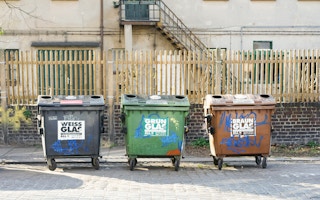The concept of a circular economy is not an alien one, but achieving it will require significant effort to change the way that global governments, businesses and people think.
At Norway-headquartered sensor-based solutions and services provider TOMRA, we aim to always maximise resource value and use, which contributes to the principles of the circular economy. That is, to keep products, components and materials at their highest value and create a clear distinction between both technical and biological cycles.
This ethos is integral to the resource revolution, but challenges remain in convincing nations - and the business sector - that embracing the circular economy can have a direct positive impact on the global economy.
Preserving natural capital
Natural resources are, in effect, capital - albeit of a finite nature - and must be handled and controlled in a way that preserves this.
Balancing the flow of renewable resources is effectively a case of weighing ecology against economy and generating a cyclical process where the resources remain in use as long as possible, through reuse, evolution and intelligent thinking, while the cost of doing this is minimized.
Efficiency versus effectiveness is a constant consideration, but embracing the circular economy creates a natural synergy between the two and illustrates that a considered approach to the use and reuse of resources can have tangible long-term impacts, not only on the environment, but the economy.
The role of technology
Technology plays a crucial role in achieving this, with advances in certain fields helping to bring about new approaches that can help maximise the value of resources and – crucially – reduce waste.
Sensor-based solutions, for example, play a key role in optimising resource productivity, particularly in the fields of waste management and recycling, where sensor technology can be used to increase precision and streamline processes.
To achieve the ambitious aim of a circular economy, it is necessary to employ state-of-the-art approaches that push boundaries. Reverse vending and waste separation processes can help to achieve this by recovering materials and providing valuable insight into the composition of these materials.
The result of such efforts is a greater understanding of where efficiencies can be made to maximise costs and minimise waste. Companies can also improve the utilisation of resources across other use cycles, in the process mitigating the impact of carbon dioxide and other emissions.
Balancing business benefits
Ultimately, every business seeks to protect its bottom line and avoid unnecessary expenditure, but to achieve this, a long-term view must be balanced against short-term aims, and this is particularly true where the use and reuse of resources is concerned.
Every sector is different, and in industries such as mining, the impact of actions taken now may not be felt for years or even decades. Here, decisions in the value chain need to be made as early as possible.
Being able to precisely sort newly mined materials before they are transported to the preparation plant can bring about significant savings on operating costs and help to minimize environmental impact.
“
To achieve the ambitious aim of a circular economy, it is necessary to employ state-of-the-art approaches that push boundaries.
Similarly, in the food industry, where minimizing waste has long been a subject of focus, optical sorting technology can help to reduce waste and ultimately maximize the yield, which has a direct impact on profit margins while addressing the problem of wasted resources and an under-supply of food.
The European Commission’s Circular Economy Package includes clear targets for forming a long-term approach to waste management and recycling, including recycling 65 per cent of municipal waste and 75 per cent of packaging waste by 2030, but these are only guidelines; the reality is that much more is possible.
It is clear that a combined effort from governments, industry bodies and the public will be required to help achieve these aims, but this will require both support and a willingness to collaborate.
Communication is key
Communication is central to a circular economy, where the benefits and importance of resource management must be clearly conveyed. The concept has deep rooted origins, but the key ethos is collaboration between industry and business that facilitates tangible benefits.
The rebuilding of capital can be financial or manufactured, social or natural, or even human, but the end result is an enhanced flow of goods and services that benefits the economy on a local, national and - ultimately - global scale.
It creates a focused view of resources and how their use and reuse can provide major benefits both financially and environmentally.
New technology can play an integral role in maximizing use rates and looping materials back into the system, not only maintaining the core principles of the circular economy, but laying the foundation for future approaches that will take this principle forward and see it evolve.
Stefan Ranstrand is president and chief executive officer, TOMRA Systems ASA. This article was written exclusively for Eco-Business.


















